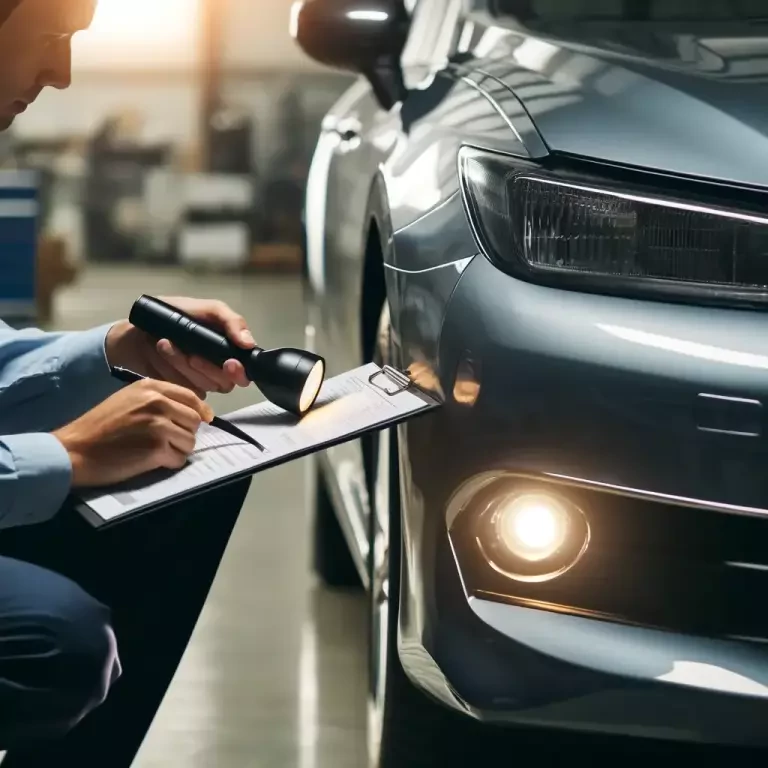
You can find tips for preparing your vehicle for door-to-door auto transport from several reliable sources:
- Transport Companies' Websites: Many auto transport companies provide detailed guides and checklists on their websites to help you prepare your vehicle for transport.
- Automotive Blogs and Forums: Automotive enthusiasts and experts often share their experiences and advice on blogs and forums. Websites like Edmunds, Car Talk, or specific forums related to auto transport can be valuable resources.
- Insurance Companies: Since they deal with vehicle protection, many insurance companies offer guidelines on how to prepare your car for transport to ensure it remains covered under your policy during the move.
- Government Websites: Check resources like the Department of Transportation (DOT) or the Federal Motor Carrier Safety Administration (FMCSA) for regulations and tips on safe auto transport.
By utilizing these resources, you can gather comprehensive and practical tips to prepare your vehicle effectively for a smooth and secure door-to-door auto transport experience.
Essential Preparation Tips

Preparing your vehicle for door-to-door auto transport involves a few critical steps to ensure it is ready and safe for the journey. These steps are designed to help streamline the transport process, minimize risk, and protect your vehicle throughout the shipping process.
Pre-Transport Checklist
Before handing over your vehicle to a car shipping company, it's important to perform a thorough check to prepare your car for shipping. This checklist ensures that your vehicle is ready and safe for transportation on an auto transport trailer.
- Clean Your Vehicle: A clean vehicle allows for accurate inspection for paint chips or any existing damage before it is shipped. This step is crucial in noting any issues that might need to be reported to the auto transport company.
- Document the Condition: Take clear, dated photos of your vehicle from various angles to record its pre-shipment condition. This documentation can be crucial in case of a dispute regarding damage caused during shipping.
- Check Tire Pressure: Ensure all tires are properly inflated. Proper inflation helps prevent any damage during the loading and unloading phases of the vehicle shipping process.
- Reduce Fuel Level: Lower the gas tank to no more than a quarter full. The lighter your car, the safer and potentially cheaper the transport, as most car shipping costs are influenced by the weight of the load.
- Secure Loose Parts and Accessories: Remove or secure items such as bike racks or custom spoilers to prevent any damage during transit.
- Deactivate Toll Tags and Passes: Remove or deactivate any toll tags and parking passes to avoid unnecessary charges as your car travels to its destination.
Personal Items and Accessories
When you ship cars using interstate car transport services, it's advised to remove all personal belongings from the vehicle. Most auto transport companies prohibit shipping personal items inside the vehicles due to risk and liability concerns.
- Remove Personal Belongings: Clear out all personal items like sunglasses, CDs, books, and especially valuable documents. Personal belongings are not covered under the carrier's cargo insurance, and having them in your car can also add unnecessary weight.
- Verify Car Insurance: Before the transport, check your car insurance to ensure that your coverage is adequate for interstate transport. Although the auto transport company will have liability and cargo insurance, knowing the specifics of what your personal policy covers adds an extra layer of security.
- Prepare for Inspection: On the day of transport, have all sets of keys ready for the truck driver and be prepared to go through a final inspection process. This step is vital to ensure that both you and the auto shipping company agree on the vehicle's condition before transport.
Mechanical Preparation
When preparing your car for shipping, mechanical readiness is just as important as the cosmetic and administrative aspects. Proper mechanical preparation not only ensures the safety of your vehicle but also helps in maintaining the integrity of the auto transport process. Here’s how to get your car ready mechanically before handing it over to an auto transport company.
- Check Fluid Levels: Make sure that all fluids in your vehicle are topped up and at the appropriate levels. This includes engine oil, coolant, brake fluid, and windshield washer fluid. However, keep the gas tank only a quarter full. The lighter your car, the better it is for the shipping process. This is because auto transport trailers have weight limits, and reducing fuel weight helps stay within these limits and can potentially reduce car shipping costs.
- Battery Check: Ensure that the battery is fully charged and securely mounted. A functioning battery is crucial because your vehicle will need to be driven onto and off the auto transport trailer. The truck driver handling your vehicle will need it to be operational for loading and unloading.
- Tire Pressure: Check that all tires are properly inflated according to the manufacturer's specifications. Properly inflated tires are crucial for safe loading and unloading operations and help prevent damage to the tires and wheels during transit. It also helps if the vehicle needs to be moved for any reason during the transport process.
- Leaks: Inspect for any leaks and address them before shipping your car. Auto transport companies may refuse to ship cars that are leaking fluids excessively because they can pose a hazard on the auto transport trailer, affecting other vehicles.
- Secure or Remove Loose Parts: Any loose parts or specialty items such as bike racks, spoilers, or custom accessories should be secured or removed. These items can become hazards during transit if they detach, leading to damage to your car or others on the transport.
- Alarm Systems: If your vehicle has an alarm system, make sure it is disabled before transport. Active alarms can go off during the transport process, leading to unnecessary battery drain and inconvenience to the transport staff.
- Locks and Windows: Ensure all windows are closed and that the car doors are functional and can be locked. This helps protect the interior of your car from the elements during open transport and secures the vehicle.
- Document Existing Damage: Note any existing damage before your car is loaded onto the carrier. This should include mechanical issues that might not be visible, like problems with the transmission or suspension. This information should be shared with the car shipping company and noted in the condition report.
- Carrier's Cargo Insurance: Verify that the auto transport company has adequate carrier's cargo insurance that covers any potential mechanical damage during transit.
Documentation and Keys

When preparing your car for shipping, handling the documentation and keys correctly is as crucial as the physical preparations. These elements are vital to ensuring a smooth process and safeguarding against potential issues during the auto transport.
Essential Documentation:
Proper documentation is your first line of defense and facilitates a transparent transaction between you and the car shipping company. Here’s what you need:
- Proof of Ownership and Identification: Ensure you have your vehicle’s registration and title documents to prove ownership. Some states or auto transport companies may also require a photo ID for verification before they ship cars.
- Insurance Documents: Check with your car insurance provider to ensure your policy covers long-distance and interstate car transport. This is crucial as it supplements the carrier's cargo insurance, providing you peace of mind knowing that any potential damage during the shipping process is covered.
- Bill of Lading: This document is critical and serves multiple purposes. It is both a receipt for your vehicle and a document that outlines the condition of your car before it is loaded onto the auto transport trailer. Ensure that any existing damage is documented to compare the state of your vehicle upon delivery.
- Inspection Reports: Some auto transport companies require a pre-shipment inspection report. This report details the mechanical and physical condition of your car and should note specifics like paint chips and whether the gas tank is properly inflated.
Managing Keys:
Handling the keys to your vehicle might seem straightforward, but there are important considerations:
- Key Preparation: Provide the truck driver with a set of spare keys to every part of your vehicle, including the ignition, trunk, and other locked compartments. It’s advisable to keep your primary set with you.
- Functionality Check: Ensure the keys work smoothly and that no issues might hinder the transporter’s ability to move your vehicle on and off the truck.
Additional Considerations:
- Remove Toll Tags and Parking Passes: To avoid unnecessary toll charges during transport, remove any toll tags or deactivate them. Also, remove any parking passes that could be scanned or charged on route.
- Personal Belongings: It’s best to remove personal belongings from your vehicle before shipping. Not only do most car shipping companies prohibit shipping personal items due to insurance reasons, but additional items can also add weight to the vehicle, potentially increasing shipping costs.
- Final Check: Before handing over your vehicle to the auto transport company, conduct a final walkthrough. Verify that all documentation is complete and in hand, and double-check that your vehicle is ready for transport—ensure the gas tank is just a quarter full (the lighter your car, the better), and that your vehicle is clean and free from any personal items.
External Preparations
- Clean Your Vehicle: Thoroughly wash your car to easily spot and document any pre-existing damage such as paint chips or scratches, facilitating accurate vehicle assessments by the transporter.
- Inspect and Document Damage: Perform a detailed inspection and take photos from various angles. Document all imperfections for comparison upon delivery to confirm no new damage occurred during transit.
- Remove Personal Items and Accessories: Clear your vehicle of personal items and removable accessories like bike racks or custom spoilers, which are not covered by carrier's insurance and may pose theft risks or affect transport costs due to additional weight.
- Check Tire Pressure and Gas Tank: Ensure tires are properly inflated to prevent damage during handling and transport. Keep the gas tank no more than a quarter full to reduce weight and help lower shipping costs.
- Secure Loose Parts: Secure or remove any loose parts or specialty items such as antennas, side mirrors, and convertible tops to prevent damage from wind or resistance during the journey.
- Deactivate Toll Tags and Passes: Remove or deactivate toll tags and parking passes to avoid incurring charges as the vehicle passes through tolls en route.

Conclusion
Finding reliable tips for preparing your vehicle for door-to-door auto transport is essential for a smooth experience. Utilize online resources to access expert advice on cleaning, inspecting, and securing your car. Proper preparation ensures your vehicle arrives safely and in top condition, minimizing potential issues during transit.






 Share on Facebook
Share on Facebook Share on LinkedIn
Share on LinkedIn Share on Twitter
Share on Twitter




 Google
Google  Instagram
Instagram  Trustpilot
Trustpilot 



